Choosing the Best PC for CAD Applications
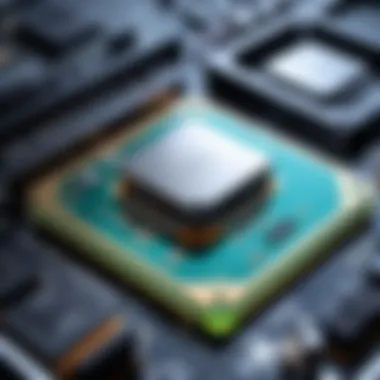
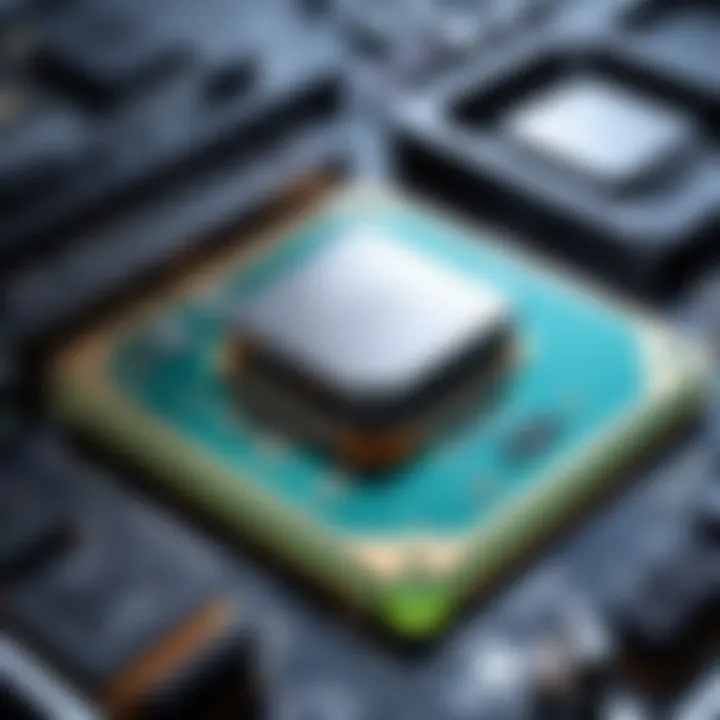
Intro
When delving into the world of Computer-Aided Design (CAD), it's essential to understand just how pivotal the right hardware can be. Selecting a personal computer tailored for CAD applications isn't merely about choosing a shiny box filled with parts; it’s about optimizing your workflow, enhancing productivity, and ensuring that your ideas come to life without a hitch. The quest for the optimal PC entails a careful evaluation of a myriad of components—from the speed of the processor to the power of the graphics card.
This article pursues a clear objective: to equip both seasoned professionals and enthusiastic novices with the knowledge needed to pinpoint the most suitable computer configurations for their specific CAD endeavors. By dissecting elements like processing power, memory capacity, graphics capabilities, and storage options, we intend to pave the way for readers to make informed decisions that revolve around their unique design demands.
The journey ahead will traverse multiple dimensions, addressing key specifications and the distinctive attributes that make certain tech stand out in the CAD universe, while balancing usability and design quality.
Venturing into this topic will empower you, providing not just information, but insights that resonate with your ambitions and elevate your design capabilities. Let's dive in!
Understanding CAD and Its Requirements
Computer-Aided Design (CAD) plays a pivotal role in multiple industries such as architecture, engineering, manufacturing, and product design. Understanding CAD and its requirements is the stepping stone for professionals who want to enhance their productivity and creativity through technology. This section sheds light on the significance of selecting the right hardware to support CAD applications effectively.
Defining Computer-Aided Design
Computer-Aided Design refers to the use of computer systems to aid in the creation, modification, analysis, or optimization of a design. At its core, CAD transforms the traditional methods of drafting and modeling into a digital format, enabling designers to see their ideas come to life on-screen. This technology allows for precision in measurements and enhances the visualization of concepts through 3D modeling and simulations.
Moreover, CAD software not only assists engineers and designers in creating highly detailed designs but also helps in testing and adjusting them before they go into production or construction. This capability significantly reduces the time and costs associated with trial-and-error methods. Companies that leverage CAD can speed up their workflow and gain a competitive edge in a fast-paced market.
The Role of Hardware in CAD Performance
Hardware is the backbone that supports CAD software functionality. When it comes to CAD applications, the performance heavily relies on a powerful computer; without it, users may experience lagging and crashes, which can be detrimental.
Several hardware components come into play:
- Processors (CPU): The brain of the computer; a powerful CPU can process complex commands and calculations much quicker, helping in smooth operation of CAD software. In essence, the more cores and threads a CPU has, the better it can handle multitasking and heavy workloads.
- Graphics Cards (GPU): A dedicated GPU is crucial for rendering intricate 3D models and animations that CAD applications often require. Quality graphics cards can drastically improve rendering speeds and the overall visual experience, making them indispensable for design professionals.
- Memory (RAM): Sufficient RAM is key to effectively running CAD applications, allowing for handling of larger files and smooth multitasking. Low memory can slow down the system, leading to frustration and lost productivity.
- Storage: Fast storage solutions like SSDs can help in loading files faster and improving response times, which is essential when working on large projects.
In summary, grasping the integral role of hardware helps users make informed choices in equipping their systems. A well-optimized PC tailored for CAD applications can make all the difference in a designer's workflow, emotional satisfaction, and ultimately, their success in a demanding field.
"Having the right hardware for CAD applications is like having the right tools in a toolbox—without them, progress can stall."
Achieving an understanding of CAD and its requirements sets the stage for exploring the key hardware components necessary for building an optimal PC.
Key Hardware Components
When selecting a PC for CAD applications, understanding the key hardware components is crucial. These components can significantly affect the performance, efficiency, and overall user experience when working with complex designs. In the world of CAD, where precision and speed are vital, having the right hardware that's tailored to your needs is non-negotiable. This section breaks down the essential hardware elements that make up an optimal CAD system, offering insights on how each contributes to enhancing productivity.
Processors: Core of the System
Selecting the Right CPU
The central processing unit, or CPU, acts as the brain of your computer. For CAD applications, it’s about selecting a CPU that doesn’t just perform but thrives under the demanding nature of design tasks. A powerful processor greatly impacts the smoothness and speed of operations. Candidates like the Intel Core i7 or AMD Ryzen 7 are often the darlings of CAD enthusiasts, offering solid performance without breaking the bank.
One key characteristic that sets a CPU apart is the number of cores. CAD software often benefits from multi-core processing, allowing for faster calculations, especially when rendering or working with complex models. In this article, a CPU with at least six cores is recommended for a robust experience. The unique edge of selecting the right CPU lies in its ability to handle multitasking efficiently, which can be a game-changer during intensive design sessions.
High-Performance vs. Energy Efficiency
In the tug-of-war between high performance and energy efficiency, every CAD user faces a crossroads. High-performance CPUs can handle demanding applications but often at the cost of higher power consumption and heat generation. This is particularly true for professionals running intensive design software for hours on end. On the flip side, energy-efficient processors are the unsung heroes, reducing electricity usage and prolonging system life, though they may not always match the raw power of their performance-focused counterparts.
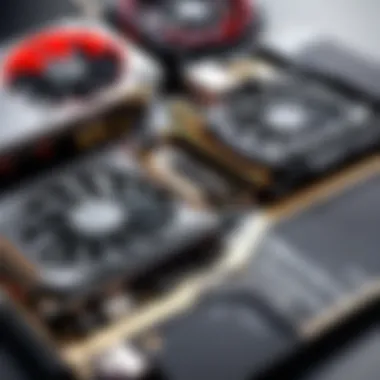
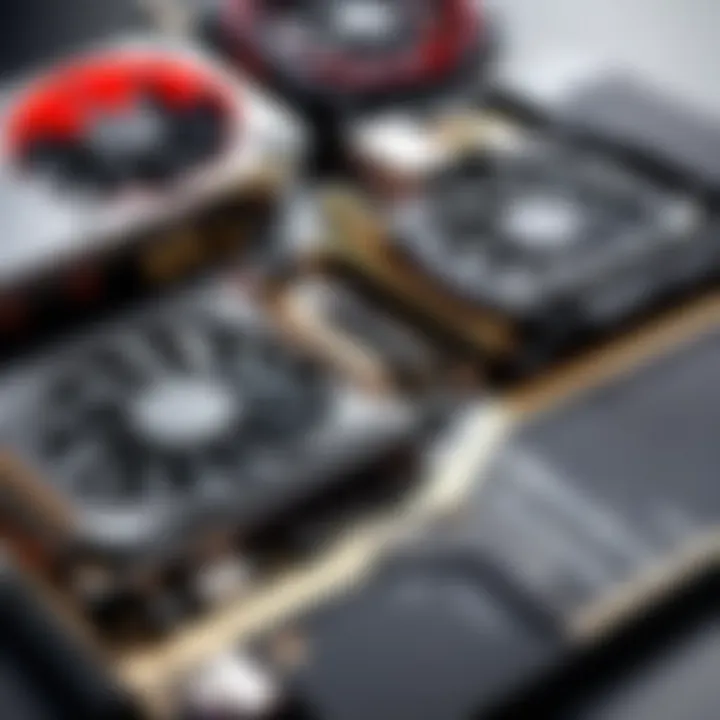
A key point to note is the TDP, or Thermal Design Power, which indicates how much heat a CPU generates. Balancing high performance with energy efficiency can yield substantial savings in the long run. Therefore, it’s wise to look for CPUs that provide robust power while maintaining a reasonable power draw to suit the needs of any CAD environment.
Graphics Cards: Rendering Power
Integrated vs. Dedicated Graphics
When it comes to CAD applications, the graphics card plays a pivotal role in how designs are visualized and rendered. Integrated graphics often fall short, primarily suited for basic tasks like word processing or web browsing. In contrast, dedicated graphics cards provide the muscle needed for 3D rendering, simulations, and visual applications. Brands like NVIDIA and AMD dominate this space, with their GPUs proving to be vital for seriously handling CAD work.
The allure of dedicated graphics cards lies in their specialized capabilities. These cards boast more VRAM and enhanced processing ability designed to accelerate rendering tasks. Still, they're generally pricier, so it’s essential to weigh the benefits against your specific needs. If your work involves extensive 3D modeling or animations, a dedicated card is a must-have.
GPU Specifications for CAD
When selecting a graphics card for CAD, focus on specifications that align well with your intended applications. Look out for a card with a high clock speed, ample VRAM, and excellent support for OpenGL and DirectX technologies, which many CAD programs rely on. A graphic card equipped with these features can drastically improve rendering times and display capabilities.
Another handy tip: be mindful of driver support. Having a graphics card that regularly updates drivers can ensure compatibility with the latest CAD software versions, making your workflow smoother. A graphics card specifically tailored for workstation tasks, like those found in the Quadro series by NVIDIA, can provide optimized performance for CAD applications.
Memory: RAM Considerations
Minimum RAM Requirements
Memory, or RAM, serves as the short-term storage that allows your system to access and modify data quickly. For CAD applications, having an adequate amount of RAM is crucial, as it directly affects the ability to manage complex files. While the bare minimum for running most CAD software may sit around 8 GB, pushing that number to at least 16 GB can significantly improve performance, particularly when handling larger projects.
In this article, it’s clear that the minimum RAM requirements should be viewed as a base. Considering the nature of CAD, opting for higher RAM is not just advantageous but can be a vital investment in your productivity.
Benefits of Upgrading RAM
Upgrading RAM can lead to a substantial boost in your overall system performance. More RAM allows for better multitasking, reducing the chances of system slowdowns when running multiple applications or extensive design simulations. For professionals who often use large design files or run simulations, upgrading to 32 GB or even 64 GB will yield noticeable improvements.
An additional unique feature of high-capacity RAM is its ability to facilitate smoother rendering and quicker file loading times. RAM acts as a buffer between your processor and storage, so when you up your game here, you are essentially reducing bottlenecks and streamlining your workflow.
Storage Solutions: HDD vs. SSD
Speed and Performance Differences
The choice between hard disk drives (HDD) and solid-state drives (SSD) can be party to heated debates among CAD users. SSDs are known for their lightning-fast read and write speeds, offering quick access to files and software. This can be invaluable when working with complex designs where every second counts. Conversely, HDDs come with significantly larger storage capacities at lower price points, making them appealing for extensive file storage.
The takeaway is that while HDDs can be adequate for basic storage needs, SSDs provide the performance that CAD users truly require, especially for larger applications loaded into memory quickly. Opting for an SSD as your primary storage solution could be one of the best decisions you make for a CAD setup.
Recommended Storage Capacities
In terms of capacities, a CAD workstation should ideally feature at least 512 GB SSD coupled with a secondary 1TB HDD for extensive file storage. This combination balances speed and space, allowing users to store active files on the SSD while keeping larger project archives safely in the HDD.
Ultimately, knowing your storage capacity needs is crucial for ensuring performance doesn’t lag. Understanding the unique requirements of your CAD applications will better inform your purchasing decisions regarding both speed and storage solutions.
Software and Compatibility
In the world of Computer-Aided Design, the compatibility between hardware and software plays a pivotal role in performance. When selecting a PC tailored for CAD applications, it's essential to think beyond the hardware components like processors and graphics cards. Software and compatibility help ensure that all these pieces work seamlessly to produce outstanding design results. Without the right software that matches your system's capabilities, even the most powerful hardware can underperform.
Each CAD program comes with its specific requirements, and being aware of these can save you headaches down the line. For instance, some programs might be resource-hungry, needing a powerful CPU and ample RAM, while others may function more efficiently with a strong graphics card. Therefore, when you're assembling parts or choosing a complete system, understanding software requirements can significantly impact your productivity and user experience.
"The best setup is one where software and hardware work hand in glove, enhancing each other’s performance."
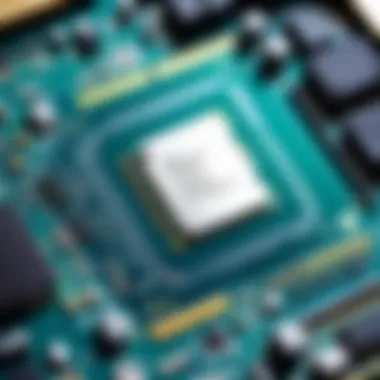
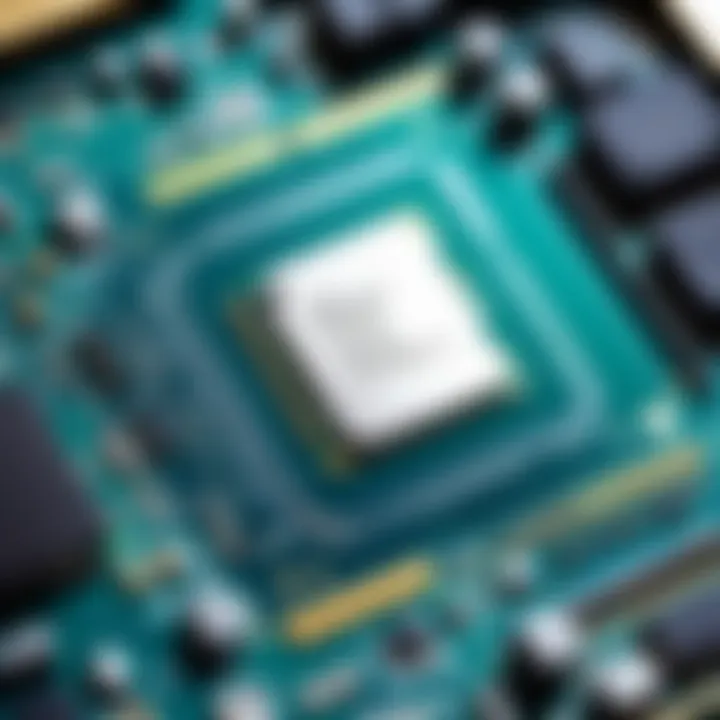
In practical terms, if you’re running advanced simulations or 3D modeling, the supporting software you choose should efficiently utilize your system’s resources. This, in turn, affects everything from rendering speed to system stability. Moreover, ensuring compliance with software licensing can prevent legal complications that could arise from improper installations.
Popular CAD Software Options
When you talk about CAD, a few names crop up consistently; AutoCAD, SolidWorks, and Fusion 360 are among the most widely used. Each offers unique capabilities suited for different specialized tasks:
- AutoCAD: Best known for 2D drafting, AutoCAD is a staple in architecture, engineering, and construction sectors.
- SolidWorks: A powerhouse in 3D modeling, it’s particularly favored in manufacturing and mechanical design.
- Fusion 360: Known for its cloud-based solutions, it’s ideal for collaboration and integrates CAD, CAM, and CAE in one platform.
If you're eyeing software like Revit or CATIA, these also come with their specific requirements and limitations. It's essential to match your hardware to the specific software demands.
System Requirements for Major CAD Programs
Each CAD tool has its particular system requirements that need careful consideration when building your PC. Below are some key factors you should look at:
- Processor: Most major CAD applications recommend at least a dual-core processor, but for intense tasks, a quad-core or even hexa-core CPU is highly advised.
- RAM: A minimum of 16GB of RAM is often suggested, but for larger projects or workflows that require multitasking, 32GB or more could be beneficial.
- Graphics Card: Dedicated graphics cards are recommended over integrated ones for CAD operations, especially for 3D modeling and rendering. Look for GPUs that are certified for your specific software.
- Storage: SSDs offer rapid load times and responsiveness compared to traditional HDDs. A combination of SSD for the OS and software with an HDD for data can be an effective strategy.
Always refer directly to the official software documentation to find the most accurate and up-to-date specifications.
In summary, while selecting the right hardware is paramount, aligning it with the appropriate software capabilities ensures that your CAD applications run smoothly and efficiently, paving the way for enhanced productivity and creativity.
Performance Benchmarks
When navigating the complex landscape of PCs tailored for Computer-Aided Design (CAD) applications, understanding performance benchmarks becomes critical. These metrics offer a way to quantify the capabilities of different hardware components, allowing you to evaluate and compare various systems effectively. Essentially, benchmarks serve as a lighthous, shedding light on how specific setups will perform under varying levels of stress that CAD programs can impose.
Why Performance Benchmarks Matter
They provide concrete numbers that validate a system's efficiency and can save you from potential pitfalls. Investing in a machine that falls short of your performance needs can lead to frustration and slowed productivity. By focusing on performance benchmarks, one can go beyond marketing claims and get a clearer understanding of what to expect from a system during real-world tasks.
On the flip side, relying solely on benchmarks without considering the full scope can also lead to poor decisions. Beyond the numbers, real-world usage scenarios can introduce variables that benchmarks may not capture fully. Thus, viewing benchmarks as a guideline rather than a rigid standard is wise.
Additionally, benchmarks often include various categories ranging from processor speed to graphical rendering capabilities. For anyone serious about CAD work, knowing how a specific setup performs not just in isolation but in the context of your specific applications is invaluable.
"A benchmark might show high scores, but if it doesn’t match up with the software’s demands, those numbers mean little."
Understanding Benchmark Metrics
When looking at benchmark metrics, you may come across a plethora of terms like FPS (frames per second), render time, or single-core versus multi-core performance. Each of these metrics offers a piece of the puzzle:
- Frames Per Second (FPS): This is particularly critical for CAD software that employs 3D modeling, as higher FPS translates to smoother visuals during rendering.
- Render Time: This is the duration a computer takes to produce an image from a model. Shorter render times directly translate to increased productivity.
- Multi-core Performance: Given that CAD applications often utilize multiple cores, understanding how well a CPU performs when under pressure can guide your purchase decisions.
Familiarizing yourself with these metrics aids in making logical comparisons. It's one thing to have a powerful graphics card, but it means little if your CPU bottlenecks the overall workflow.
Analyzing Real-World Performance
Once you've gathered your benchmark numbers, the next step is analyzing how those translate into everyday performance. Certainly, raw metrics offer insights, but they often miss the nuances of actual use cases.
Begin by examining specific applications most relevant to your work. Different CAD programs can place varying demands on hardware, so the way a system performs in solid modeling might differ from how it handles rendering tasks. Look for reviews or case studies that focus on real-world usage rather than just cold, hard stats. This kind of qualitative data fills in the gaps left by purely numerical results.
For example, while a CPU may score well in synthetic benchmarks, it might actually struggle when dealing with complex assemblies in software like AutoCAD or SolidWorks. Characteristics such as thermal throttling, memory bandwidth, and I/O speeds play a huge role in overall performance, yet are less frequently included in standard benchmark tests.
To sum it up, performance benchmarks are not merely numbers but essential tools for optimization in the CAD realm. They guide both novices and seasoned professionals toward making more informed hardware choices, ultimately leading to greater efficiency and productivity in design tasks.
Budget Considerations


When it comes to setting up a solid PC for Computer-Aided Design (CAD) applications, budget considerations play a pivotal role. This isn’t just about picking the most expensive components on the market; it’s about understanding what you truly need based on your specific tasks and ensuring that every dollar spent has a purpose. A well-structured budget helps identify the essentials that will yield the best performance without breaking the bank.
With the right budget planning, you can prioritize critical components, ensuring that your investment translates to tangible improvements in productivity and efficiency. Poor budgeting can lead to overspending on unnecessary features or components that matter less for your intended use. For instance, a lavish GPU may not be the best choice if your primary work involves 2D design as compared to 3D modeling tasks requiring heavy rendering power.
Identifying Your Needs
Before diving into shopping mode, it’s crucial to spend some time assessing your needs. Not every CAD task requires the latest and greatest hardware. Consider the type of projects you typically undertake:
- 2D Drafting: If your focus is on 2D applications, you might not need the top-tier graphics card. A more modest GPU combined with a speedy CPU and sufficient RAM might do the trick.
- 3D Modeling: When working with 3D models and complex assemblies, emphasis should be placed on higher-end graphics capabilities and robust processing power. Here, ditching the budget cap could prove worthwhile as the performance gains would directly affect your capability to work efficiently.
- Rendering & Simulation: If your work often involves rendering high-quality visuals or running simulations, invest in a powerful CPU and a capable GPU. These demands tally up, and incremental upgrades could prove more costly in the long run if done piecemeal.
By identifying your core requirements, you’re better equipped to allocate budget funds wisely, avoiding wasteful spending on features that won’t have an impact on your performance.
Balancing Cost and Performance
Finding that sweet spot between spending and the performance you gain is often a balancing act. You want to maximize the performance per dollar spent. Here’s where it can get tricky: strong marketing can tempt buyers towards high-end components that don’t always align with their immediate needs. To navigate this effectively, consider these points:
- Prioritize Essential Components: As the title says, certain hardware components should be treated like gold while others are merely silver. Focus funds on those critical parts such as the CPU and GPU. These are your workhorses. Skimping on RAM or storage can lead to bottlenecks that diminish the potential of otherwise strong hardware.
- Look for Mid-Range Options: Often, mid-range products yield a great balance between capabilities and cost. Rather than splurging on top-tier models for every component, you might find that slightly older or mid-range models could provide almost comparable performance at a lower price point. Many users find that a solid mid-range GPU suffices for most CAD applications.
- Plan for Future Upgrades: Think long-term. A larger budget now might allow for room to upgrade components down the line. For example, investing in a motherboard that supports the latest technologies will let you replace the CPU or add more RAM as needed, instead of replacing the whole machine in a few years.
"Budgeting isn’t about cutting costs; it's about understanding value and making informed choices."
Future-Proofing Your Investment
When investing in a PC tailored for CAD applications, it’s crucial to think beyond your immediate needs. The world of technology is rapidly evolving, and what might seem cutting-edge today could be obsolete in just a few years. Future-proofing your investment ensures that your system remains relevant and capable, allowing you to adapt and grow as demands in your field change. It's not just about selecting high-spec components; it's also about understanding potential advancements and the flexibility of upgrading those components.
Anticipating Technological Advances
Technological advancement is the name of the game in the realm of computer hardware. Processes that could take hours are now streamlined to a fraction of that time. So, what does that mean for CAD users? Thinking ahead demands an awareness of trends in processors, GPUs, and memory technologies.
- Processor Evolution: CPUs are frequently upgraded, and new architectures are introduced regularly. Staying attuned to these advancements can help you choose a platform that supports future generations of processors. For instance, opting for a motherboard that accommodates future CPU models can save headaches down the line.
- The Rise of AI and Machine Learning: More CAD software is integrating machine learning capabilities to improve efficiency. Investing in hardware that facilitates these emerging technologies can enhance your productivity. This could include GPUs with specialized cores for AI, boosting tasks like rendering and simulations.
- Increasing RAM Needs: As CAD applications become more complex, the demands for RAM increase. It’s advantageous to select a configuration that allows for easy upgrades in the future. Investing in a motherboard that supports higher RAM limits can protect your investment against becoming outdated too soon.
"As technology continues to advance at breakneck speed, anticipating the next wave of innovation becomes essential for any serious CAD professional."
Upgrade Paths for Longevity
Even with careful planning, there will always be a need to enhance your system’s performance over time. Understanding and establishing clear upgrade paths is vital for maximizing both performance and the lifespan of your PC.
- Modular Component Design: Opt for a case and motherboard that support easy upgrades. This means ensuring your system can accommodate larger graphics cards or additional drives without requiring a complete rebuild.
- Future-Proof Storage Solutions: The surge in SSD technology offers advantages that traditional HDDs can't match. Investing in M.2 NVMe drives not only delivers speed but allows you to add more in the future. Having spare slots available can keep you well-equipped as your storage demands grow.
- Legacy Support: Choose components that ensure compatibility with legacy systems. This can be particularly useful if you occasionally need to run older CAD applications. Knowing what ports, formats, and interfaces are still widely used can save frustrations later.
To wrap it up, gearing up for tomorrow’s challenges today is a smart approach. Each component’s flexibility and adaptability contribute significantly to maintaining an optimal CAD workstation over time. By keeping an eye on technological trends and ensuring your setup has the capacity for upgrades, you can secure your investment and remain competitive in a swiftly changing landscape.
Ending
One significant aspect to consider is the integration of software and hardware. The growing demands of CAD software require powerful CPUs and robust GPUs, emphasizing the need for dedicated solutions over integrated options. Lighting up designs and simulations can make or break efficiency, hence investing in quality graphics processing can simplify tasks that otherwise would require arduous effort.
Moreover, memory and storage cannot be overlooked. RAM enables multiple applications and extensive file handling without the dreaded lag. SSD storage has come to be a game changer, providing faster load cycles which can significantly enhance productivity. Films illustrating 3D rendering can reduce average waiting periods, empowering users to focus on their design rather than tech woes.
All things considered, it's all about investment. Spending a little extra upfront on quality components can yield substantial long-lasting benefits, increasing your system’s longevity and adaptability to future CAD innovations.
"The best investment is always in yourself, especially when it will enhance your creative prowess!"
Recap of Key Points
- Importance of Hardware: The effectiveness of CAD applications is greatly influenced by the chosen hardware. Key components such as CPUs, GPUs, RAM, and storage options have a direct impact on performance.
- Software Compatibility: Prior to selecting a system, understanding the requirements of the CAD software you are working with is crucial. Different programs have varying hardware needs which should dictate your choice.
- Future-Proofing: As technology continuously evolves, opting for high-quality and upgradable components can secure your investment against obsolescence.
Final Recommendations
- Invest in High-Performance Components: For serious CAD work, prioritize a high-quality processor and a dedicated graphics card.
- Ensure Ample Memory and Fast Storage: Aim for at least 16GB of RAM and an SSD for storage to ensure quick access times and smooth multitasking.
- Plan for Upgrades: Look for systems with room for upgrades, so you can enhance performance when necessary without replacing the entire setup.
- Check Software Requirements: Always refer to the specific hardware requirements of your favorite CAD software to avoid compatibility headaches.
- Budget Wisely: While it may be tempting to cut corners, think long-term and don’t hesitate to spend on solid components that will serve you well for years to come.







